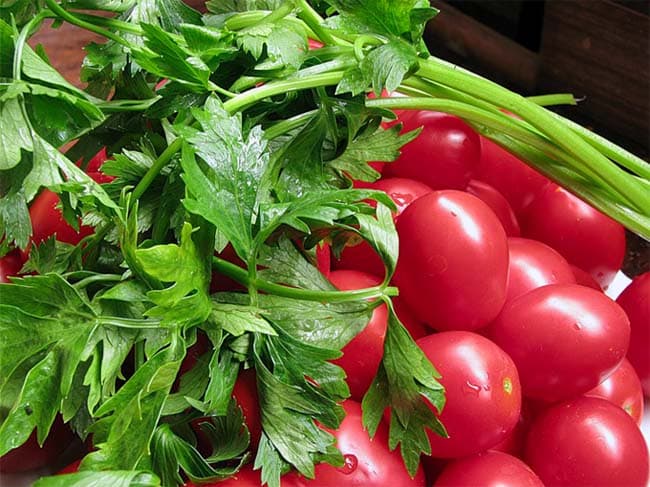Ex Tax: 1.45€
An amazing aromatic plant: table decoration and healing seasoning. Good for men!
Mid-season variety: the period from germination to the start of harvesting is 65-70 days. The leaves are highly aromatic.
The leaf rosette is powerful and erect. The leaf is heavily dissected, smooth, glossy. Leaves are cut several times during the summer. The variety is drought-resistant and resistant to low temperatures. Universal use, this variety is especially suitable for drying.
Agrotechnics.
Celery is grown both through seedlings and by sowing seeds in the ground. Sowing of seeds is carried out in late February - early March. 1,0 g = 1800-2500 seeds.
Since the seeds are very small, you need to make sure that they do not fall into the depths. To obtain healthy, strong seedlings, they require careful care: loosening, watering, fertilizing.
Seedlings are planted in the ground at the age of 60-80 days in mid-May. The soil should be loose and moist. Further care consists of regular watering, fertilizing and weeding. Root crops are harvested when persistent frosts occur.

* How to grow celery seedlings?
Celery seedlings are grown for 60~80 days. Leaf and petiole celery can be grown as potless seedlings (they take root well). It is more advisable to grow root varieties in pots measuring 5 x 5 cm with seedlings picked at the age of 25-30 days. This will provide the best conditions for the formation of a full-fledged root crop. A seedling is considered standard if it has 4-6 leaves, a leaf height of 10-12 cm and a mass of one plant of 5~7 g. Larger seedlings produce a more powerful plant. Celery can easily be transplanted at any age.
Celery seeds are sown for seedlings in mid-February. They are very small and germinate slowly. To speed up germination, the seeds are dipped in hot water (+70°C) for 30 minutes, then quickly cooled and left at +18+20°C for two days. Shoots appear on the 10-12th day. The seeds are covered to a depth of 0.5 cm with soil and compacted well. Otherwise, small celery seeds, placed in the surface layer of loose soil, dry out and germinate slowly or do not germinate at all. Minimum temperature for germination is +7+8°C. At lower temperatures, the seeds become moldy and do not germinate.
Boxes with crops are covered with glass or film, protecting the seedlings from drying out. During the first 30-40 days, celery grows very slowly. Seedlings dive when the second leaf appears at a distance of 4-6 cm into boxes or one at a time into pots. Feed the seedlings 2-3 times after the formation of the third leaf with an interval of 7-10 days. It responds well to sodium nitrate, which is added with each feeding (15-20 g per 10 liters of water). During the second and third feedings, superphosphate (20-30 g) and potassium salt (10-15 g) are added. 2-3 days before planting, seedlings are watered abundantly. Standard seedlings 10-12 cm high have 4-5 unfolded leaves, ready for planting 45-50 days after picking.
* Pickled leaf celery.
Wash fresh, healthy celery leaves thoroughly. Place a clove of garlic and bay leaf on the bottom of the jars, followed by prepared celery leaves. Pour hot marinade and pasteurize in boiling water for 20-25 minutes.
4 glasses of water, 1 glass of 9% vinegar, 40-80 g of salt, 40-100 g of sugar per liter jar, 2-4 cloves of garlic, 2 bay leaves.
* Salted celery.
Wash fresh, healthy leaves thoroughly, dry, chop finely, mix thoroughly with salt and place tightly in jars. When juice appears on the surface of the mixture, roll up the lids. Store in a dark place.
1 kg of celery leaves, 200-250 g of salt.












